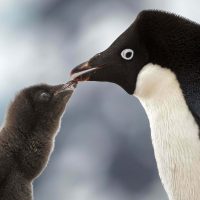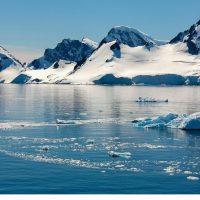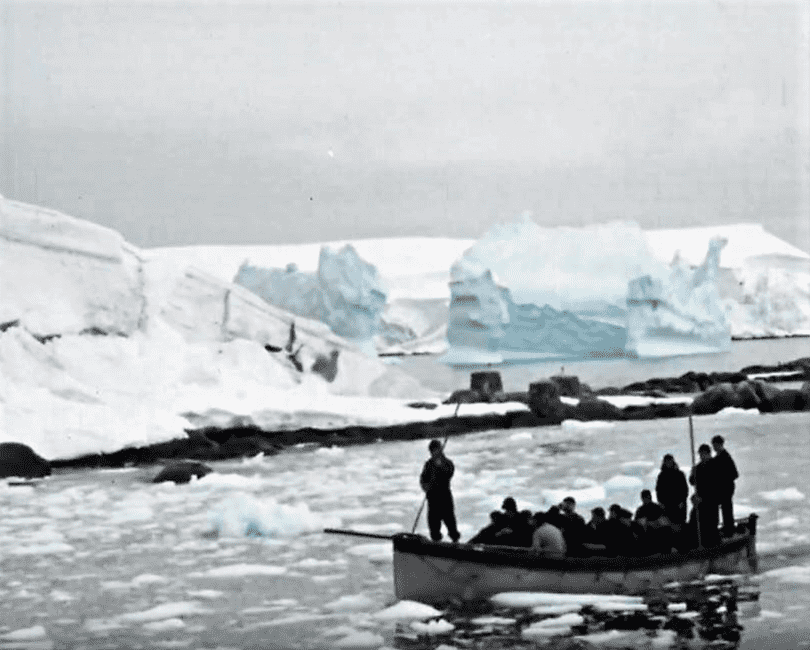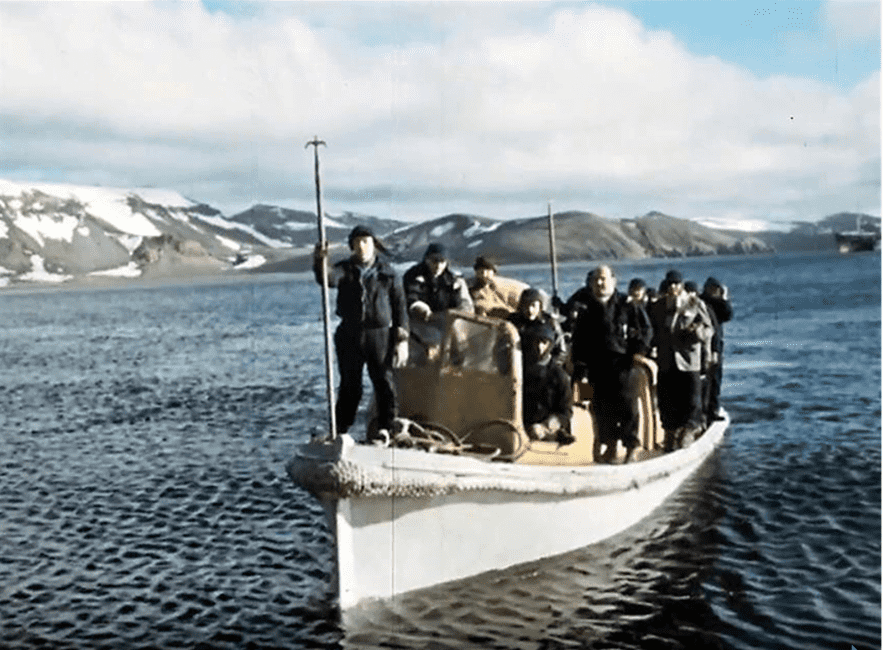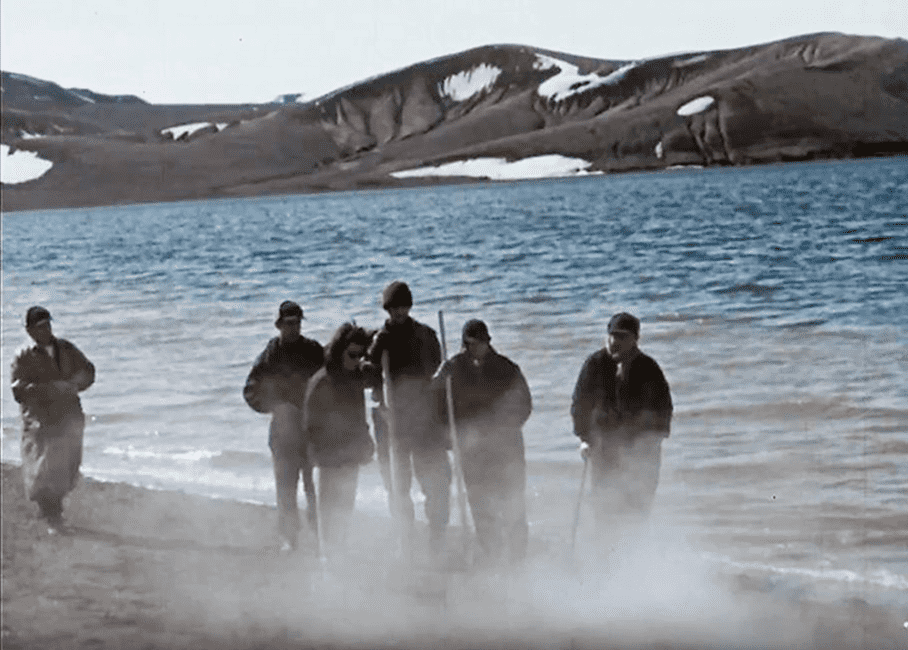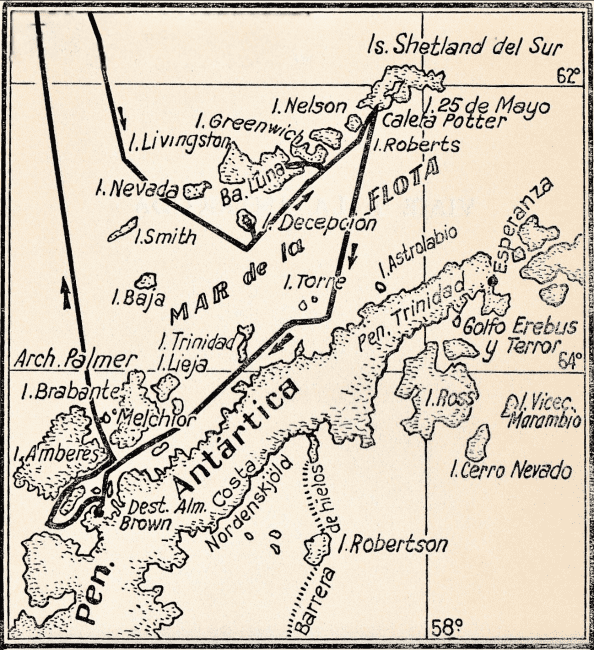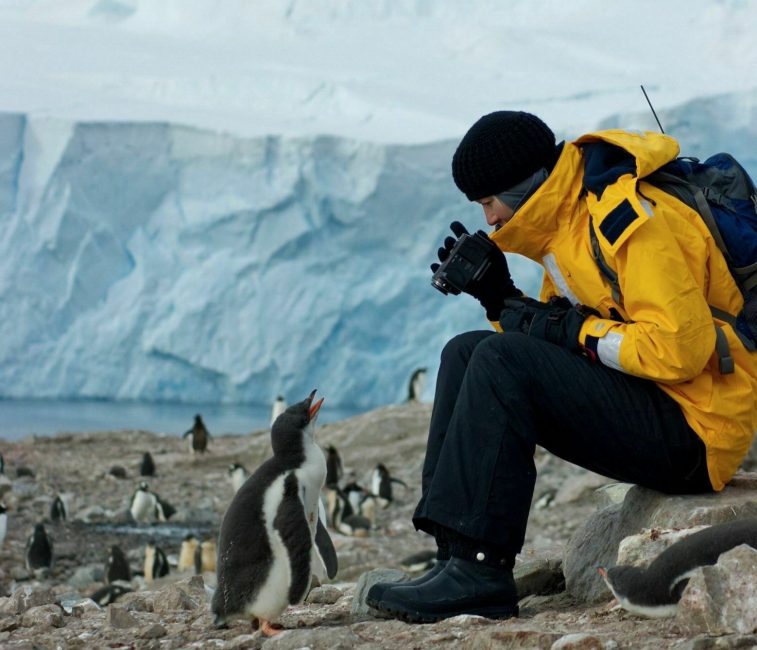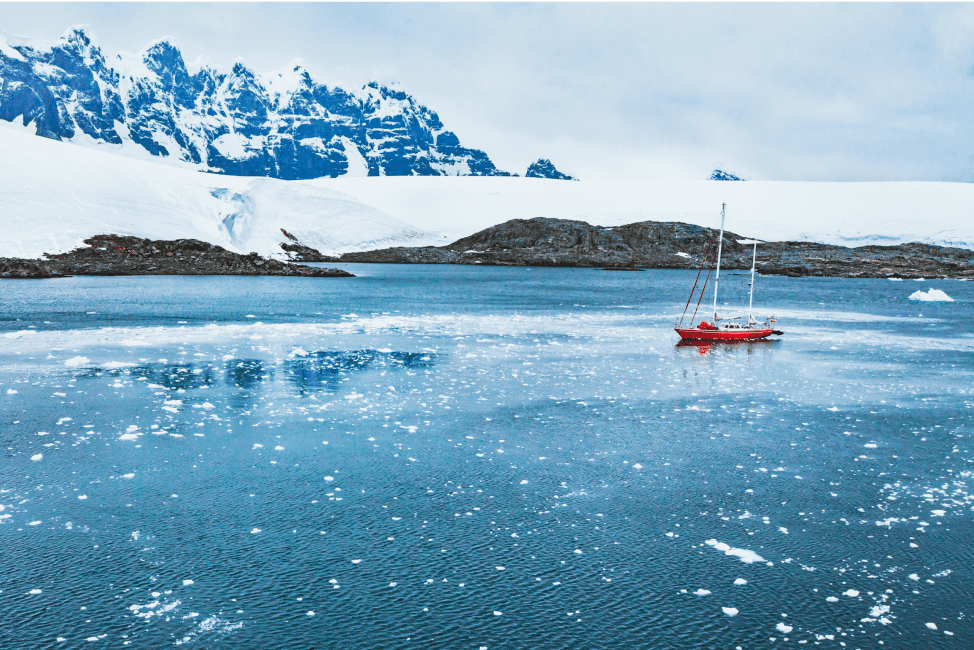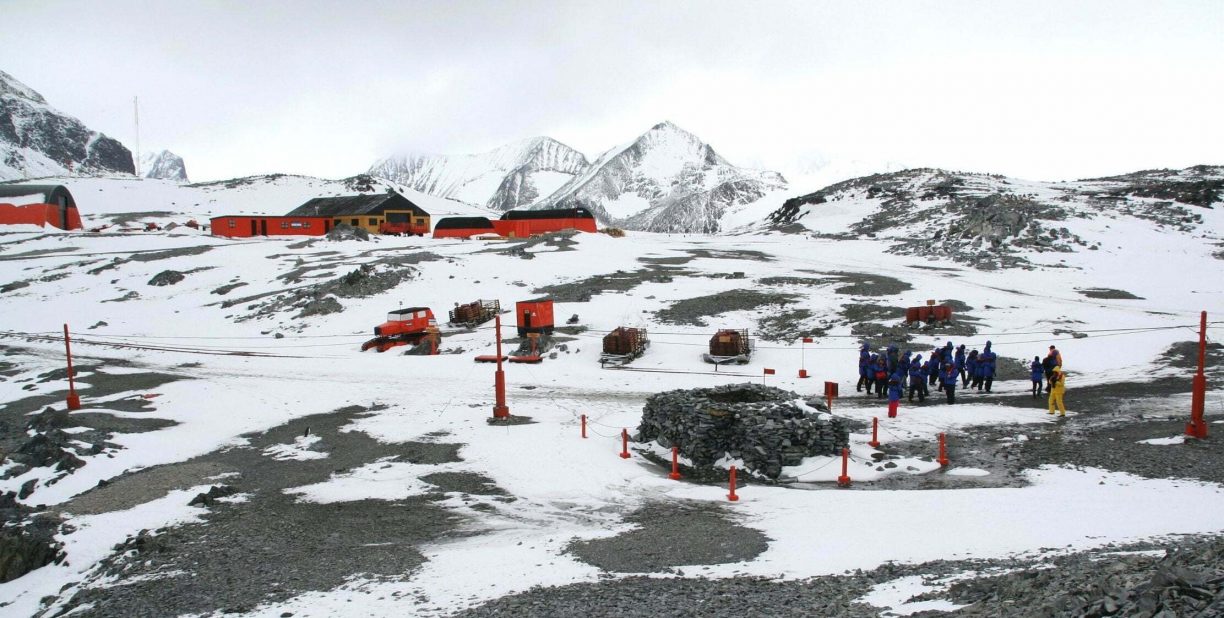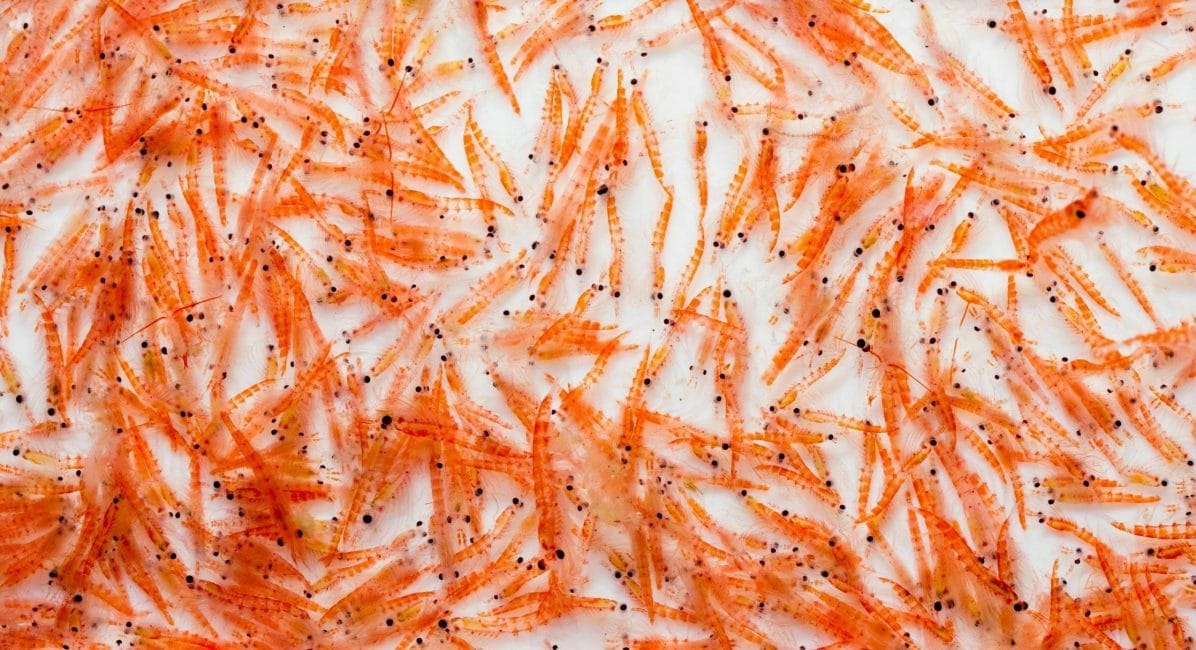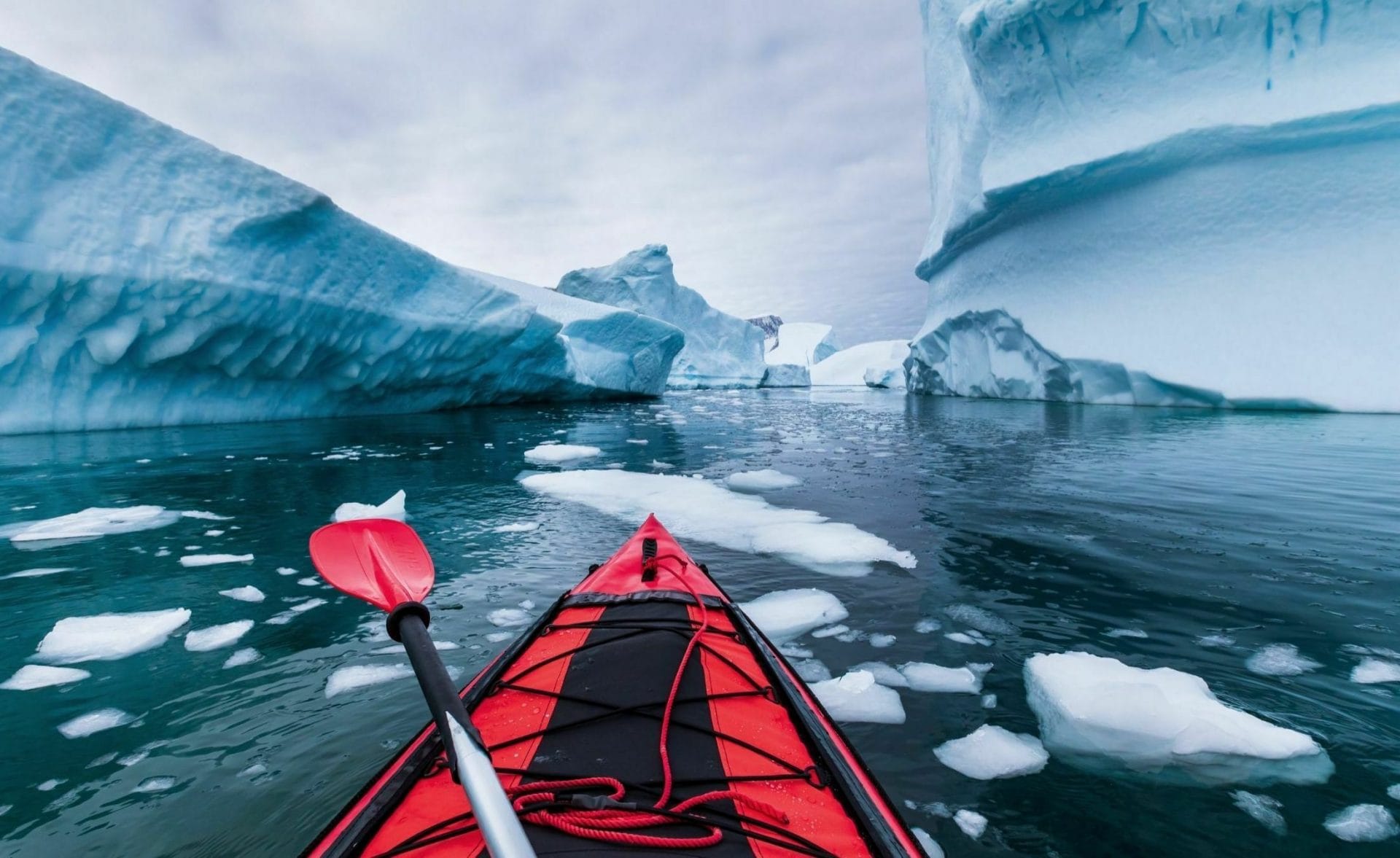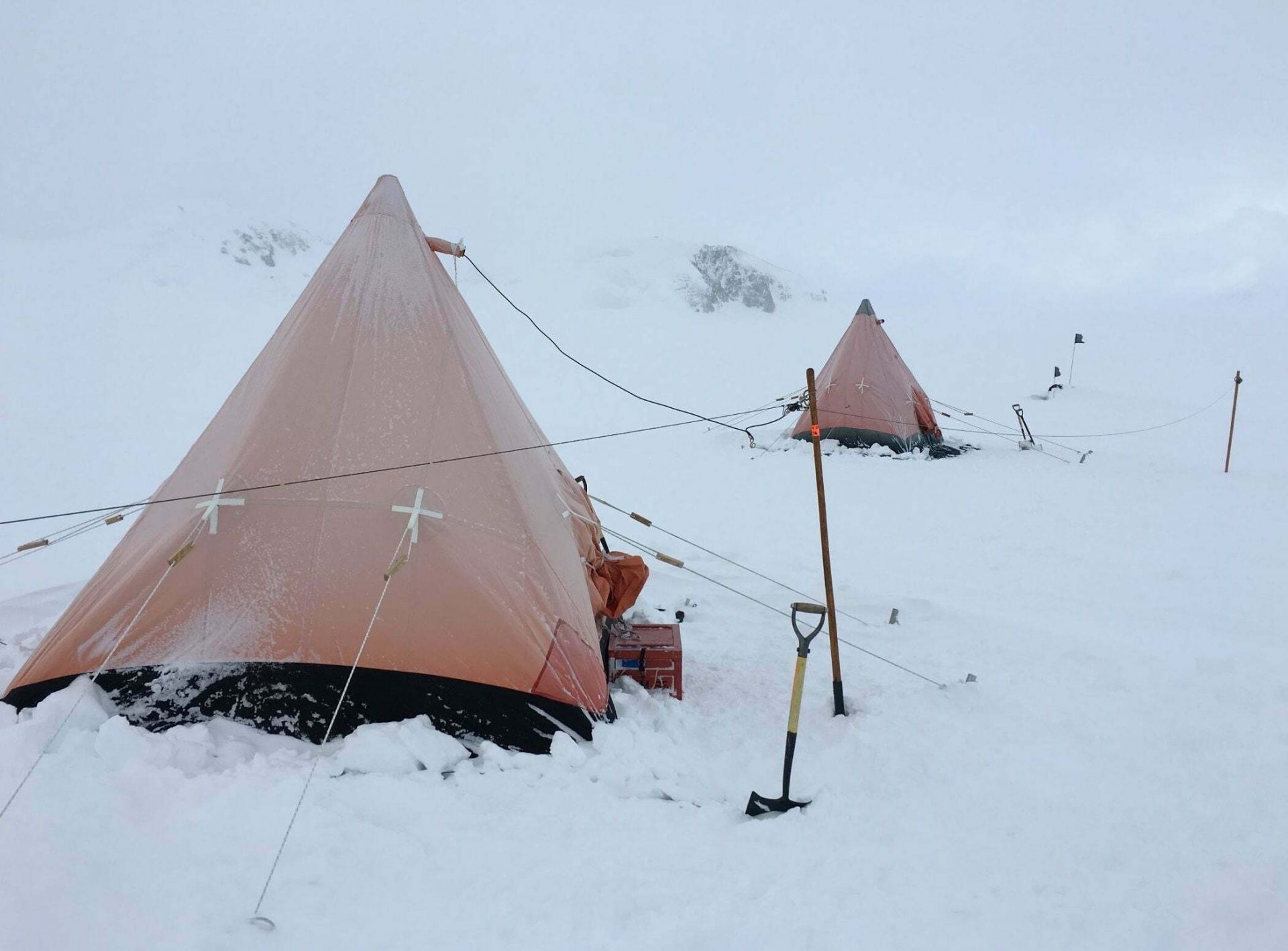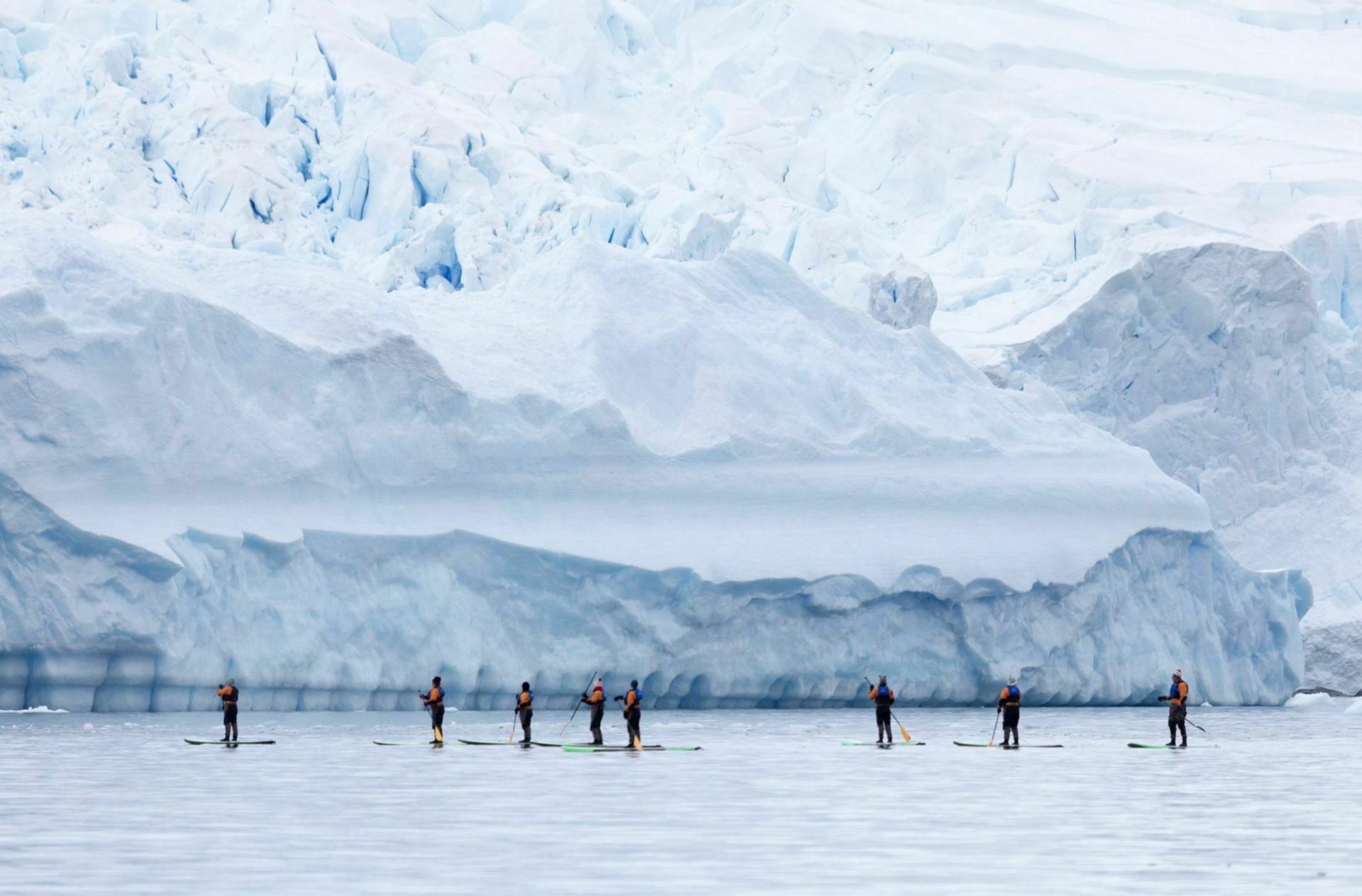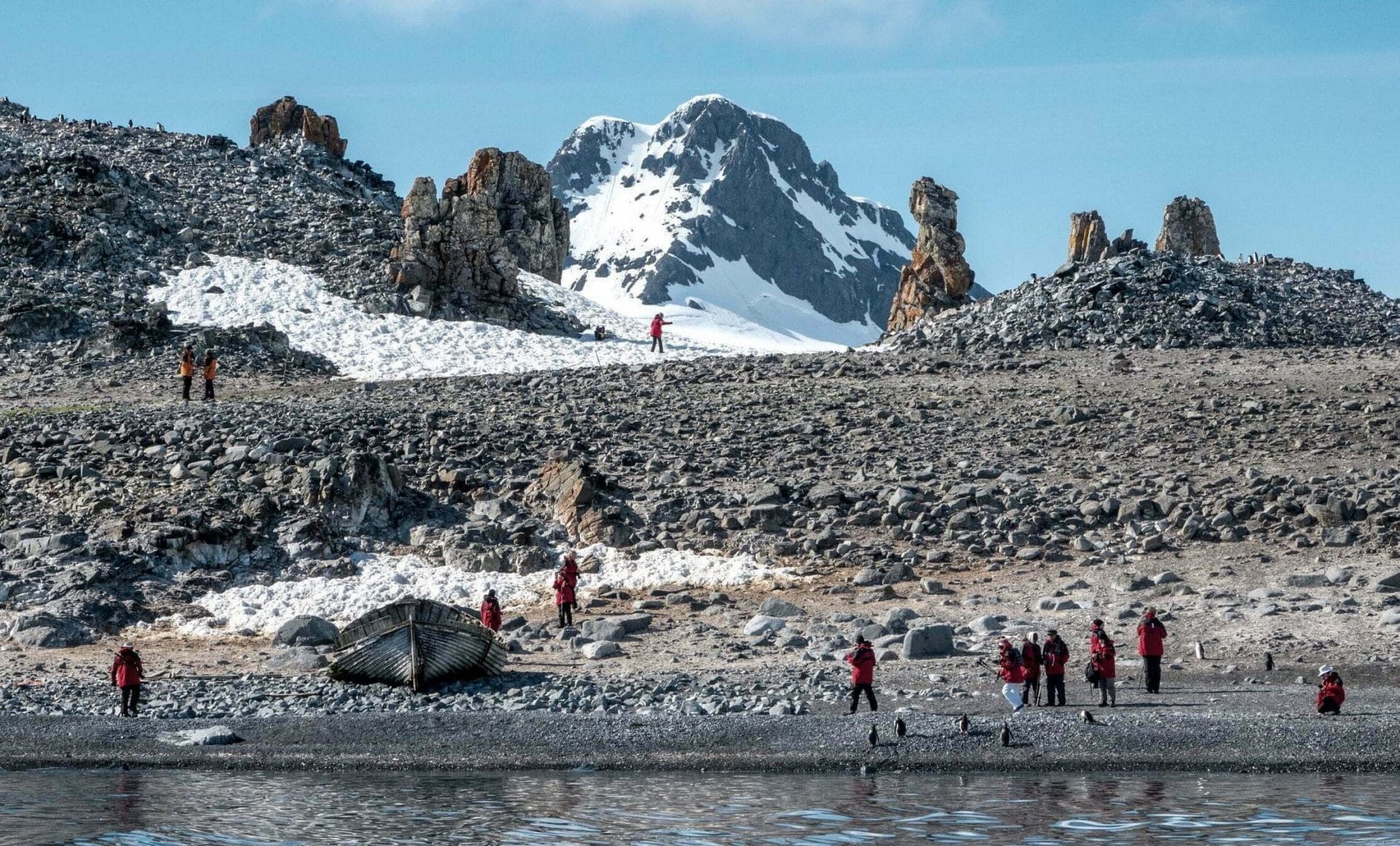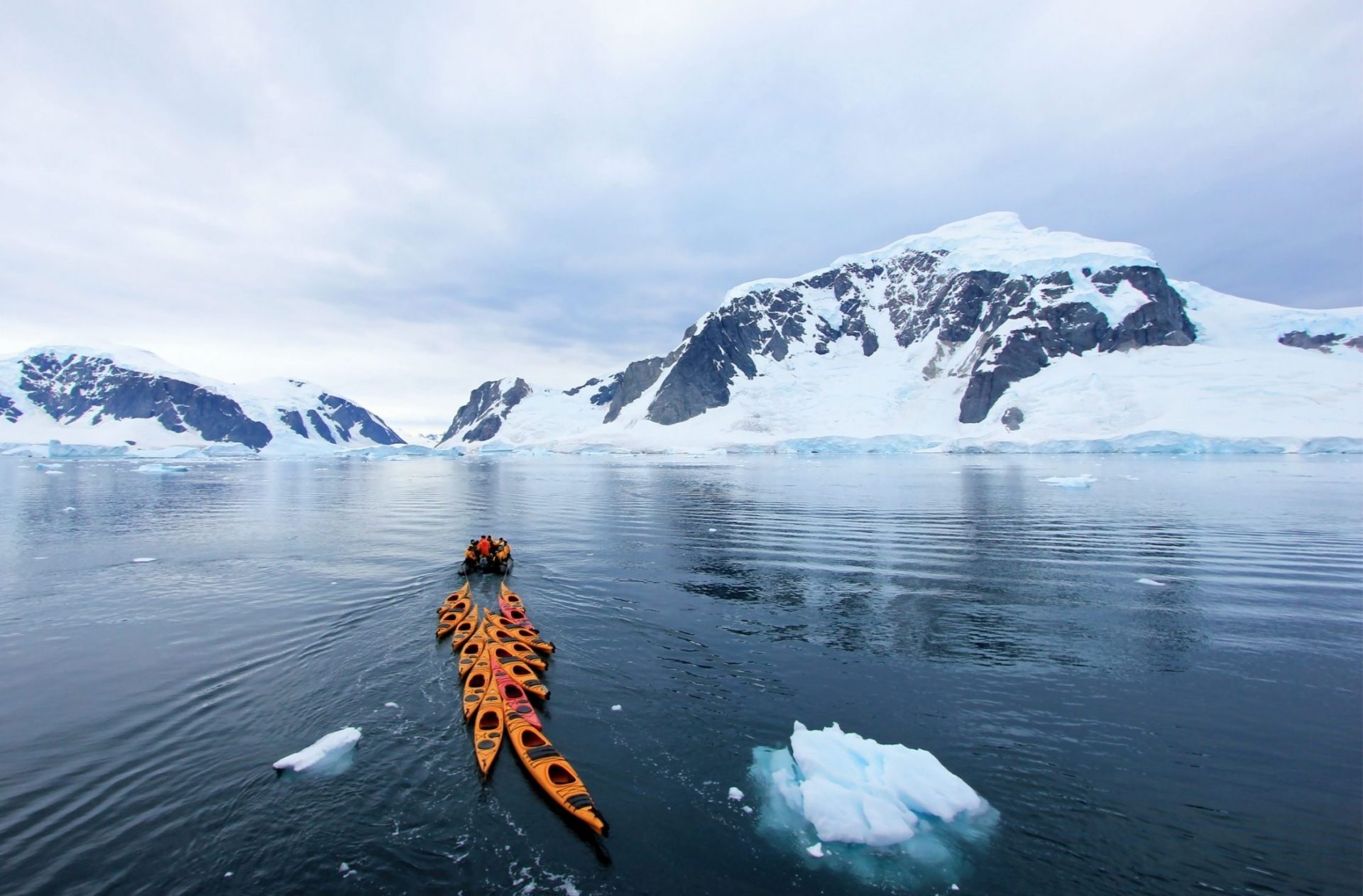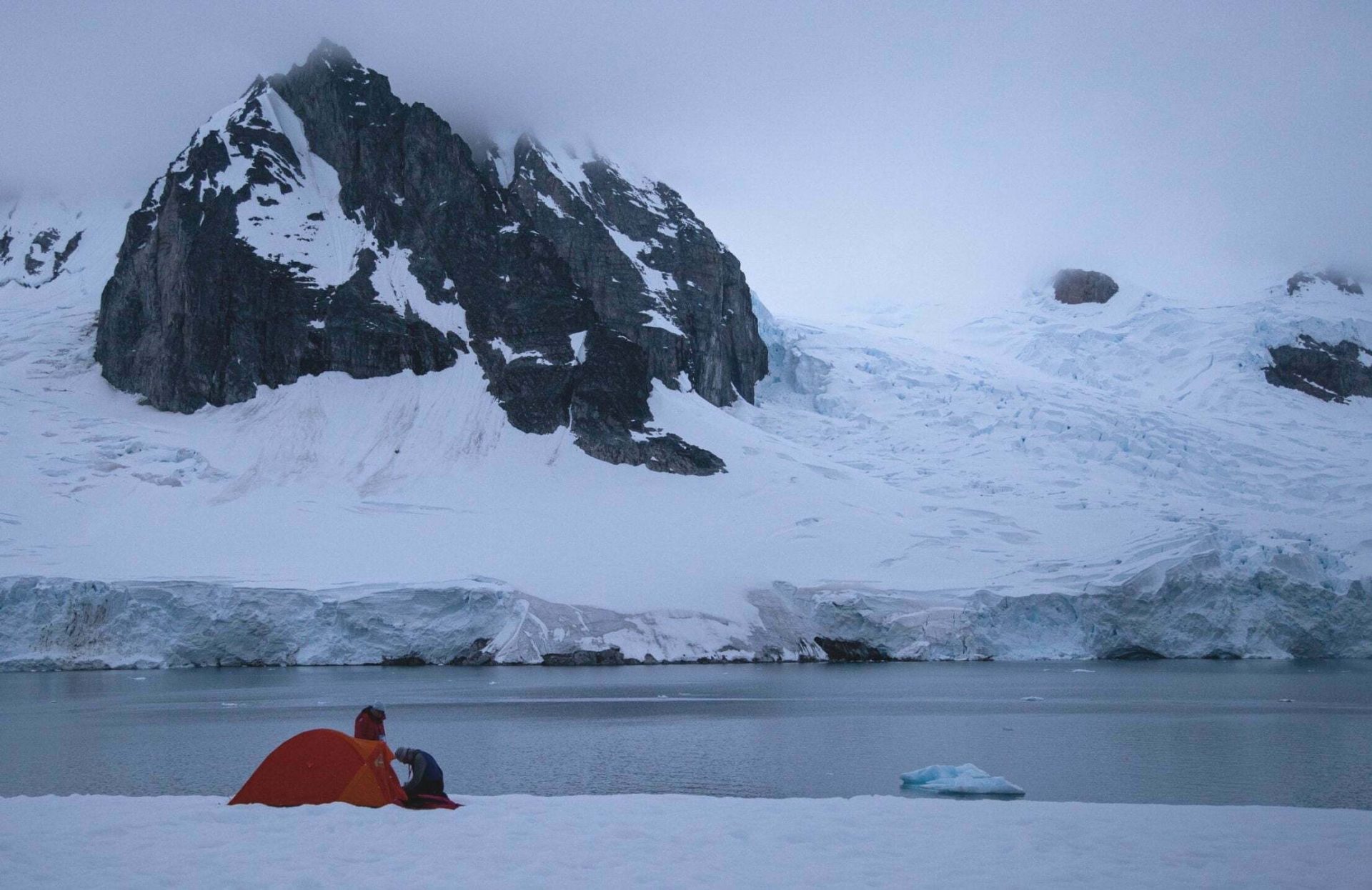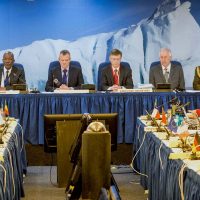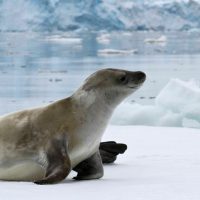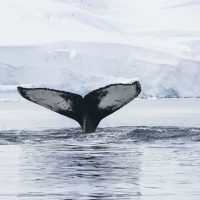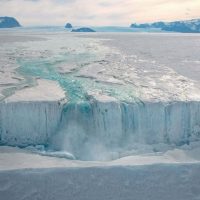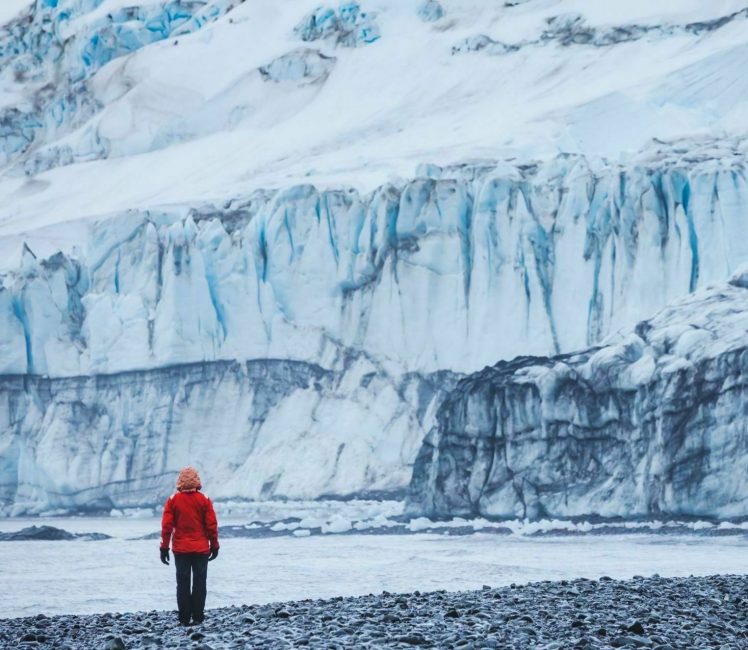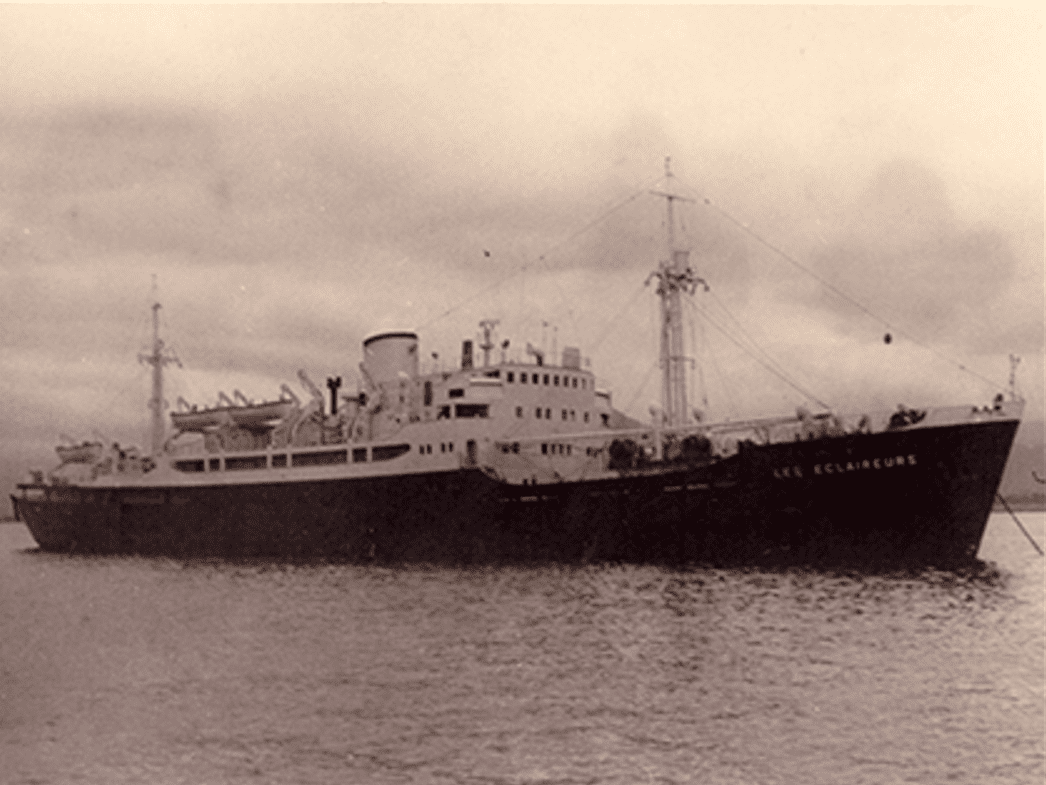
HISTORY OF ANTARCTIC TOURISM
In the beginning
Around the 1880s, or perhaps even earlier, paying passengers sailed South as tourists on industrial vessels. These early sightseers participated in life aboard working ships as they visited sub-Antarctic islands, with later voyages venturing progressively south.
Les Eclaireurs
Credit: Unknown [Possibly Carlos V. Cácharo, 1958]
Tourism before the Antarctic Treaty
HISTORY OF ANTARCTIC TOURISM
The exact origins of modern Antarctic tourism remain hazy. Around the 1950s, Argentine and Chilean operators started offering dedicated tourist voyages with approximately 100 passengers each. The modus operandi was very similar to that in use today.
The first Antarctic flights were offered around the same time, with small groups flying from Chile to Antarctica in 1959. Between them, they took around 500 tourists to Antarctica each season.
The Antarctic Treaty was signed in 1959 to establish a system of collective international governance, including regulations for most human activity in Antarctica. The Treaty made no specific reference to tourism: at the time, no one could have imagined Antarctic tourism on the scale we see today.
VOYAGE TO ANTARCTICA
Turismo en la Antártida
View historical footage from an Argentinian tourism voyage to Antarctica on the vessel Les Eclaireurs, January 1958.
Modern Antarctic tourism begins
HISTORY OF ANTARCTIC TOURISM
For many years, the number of people visiting Antarctica remained small. By the 1980s there were four companies operating in Antarctica, each of them carrying around 100 passengers. Most people visited Antarctica by ship, making short excursions ashore in small rubber boats. One tourism company offered land-based tourism, with flights to a remote field camp where tourists could take guided hikes, ski expeditions and other adventurous options. The first tourists reached the South Pole in January 1988, 77 years after Norwegian explorer Roald Amundsen.
These were the halcyon days of Antarctic tourism. A frontier industry tucked away on the underside of the globe, a world few knew anything about. Some measures within the Antarctic Treaty may have applied to tourists, for example those related to the protection of flora and fauna, but there were few ways of enforcing them. There were no tourism-specific regulations governing how many people visited, when or where.
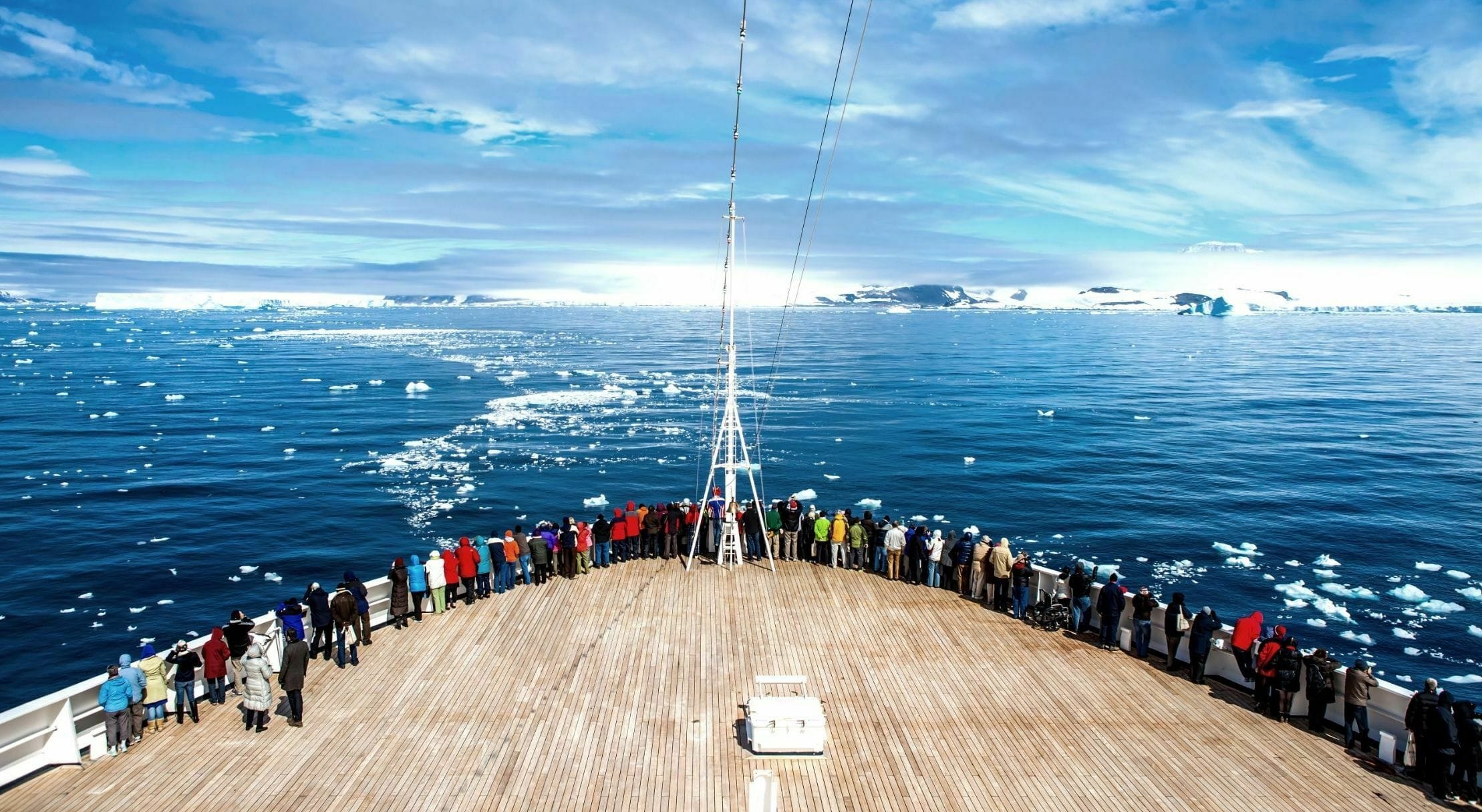
By the early 1990s, interest in visiting Antarctica was growing. There were six companies and ten vessels operating in Antarctic waters, as well as one land-based operator, together bringing over 6,000 tourists to the region each season.
The start of something big
HISTORY OF ANTARCTIC TOURISM
The year 1991 was a significant one. After the collapse of the Soviet Union, a number of polar vessels previously used for research and surveillance in the Arctic were made available for charters to polar regions. This influx of ice-strengthened ships propelled a period of growth in an evolving industry.
That same year, seven Antarctic tourism operators came together to establish the International Association of Antarctica Tour Operators (IAATO). The primary goal of IAATO was to promote safe and responsible private-sector travel to Antarctica.
Growth and diversification
ANTARCTIC TOURISM TODAY
Today, Antarctic tourism is a large and growing industry. As of 2022, there are 16-20 new cruise vessels due for delivery within 3 years. While some older vessels are being retired, these new vessels will allow 30 to 40 percent more tourists to visit Antarctica within only a few years.

Most Antarctic tourism takes place on the Antarctic Peninsula: the most rapidly warming place in the Southern Hemisphere. Air temperatures here rose by 5°F (3°C) between the 1950s and early 2000s – more than five times the global mean.
An ecosystem under pressure
ANTARCTIC TOURISM TODAY
Tourism activities are concentrated in important pockets of biodiversity, in the part of Antarctica most severely affected by the climate crisis and growing krill fisheries.
The vast majority of Antarctica is covered in ice. Small ice-free regions are home to a diversity of delicate plant life and invertebrates, and provide essential rocky nesting grounds for Adélie, gentoo and chinstrap penguins.
Tourists in Antarctica also land on these tiny slivers of ice-free ground to visit penguin colonies, admire mosses and wander along the delicate shore. Despite regulations put in place to protect the most vulnerable habitats, all visits have an impact.
Krill fisheries
ANTARCTIC TOURISM TODAY
A growing commercial krill fishery adds another layer of complexity to the situation on the Antarctic Peninsula. Commercial fishing of Antarctic krill began in the 1970s, and is regulated by the Commission for the Conservation of Antarctic Marine Living Resources (CCAMLR). Today most commercial krill fisheries are concentrated around the Antarctic Peninsula and Scotia Sea areas, where most tourism also takes place.

REGULATION OF ANTARCTIC TOURISM
The majority of Antarctic tour operators take environmental protection very seriously. However, the current regulatory system is incomplete.
REGULATION OF ANTARCTIC TOURISM
How is Antarctic tourism regulated today?
There are few legally binding instruments in force to regulate Antarctic tourism. However, several international organizations and agreements play a role in its management.

The Protocol on Environmental Protection to the Antarctic Treaty (Madrid Protocol)
The Environmental Protocol outlines basic principles that protect the Antarctic environment and guide most human activities in the region, including tourism.

Other instruments within the Antarctic Treaty System
There is no dedicated body within the Antarctic Treaty System (ATS) tasked with regulating tourism.

International Association of Antarctica Tour Operators (IAATO)
The International Association of Antarctica Tour Operators (IAATO) is an international industry body established by Antarctic tour operators.

International Maritime Organization (IMO)
The International Maritime Organization is an agency of the United Nations responsible for safety and security in international shipping, and preventing pollution from ships.
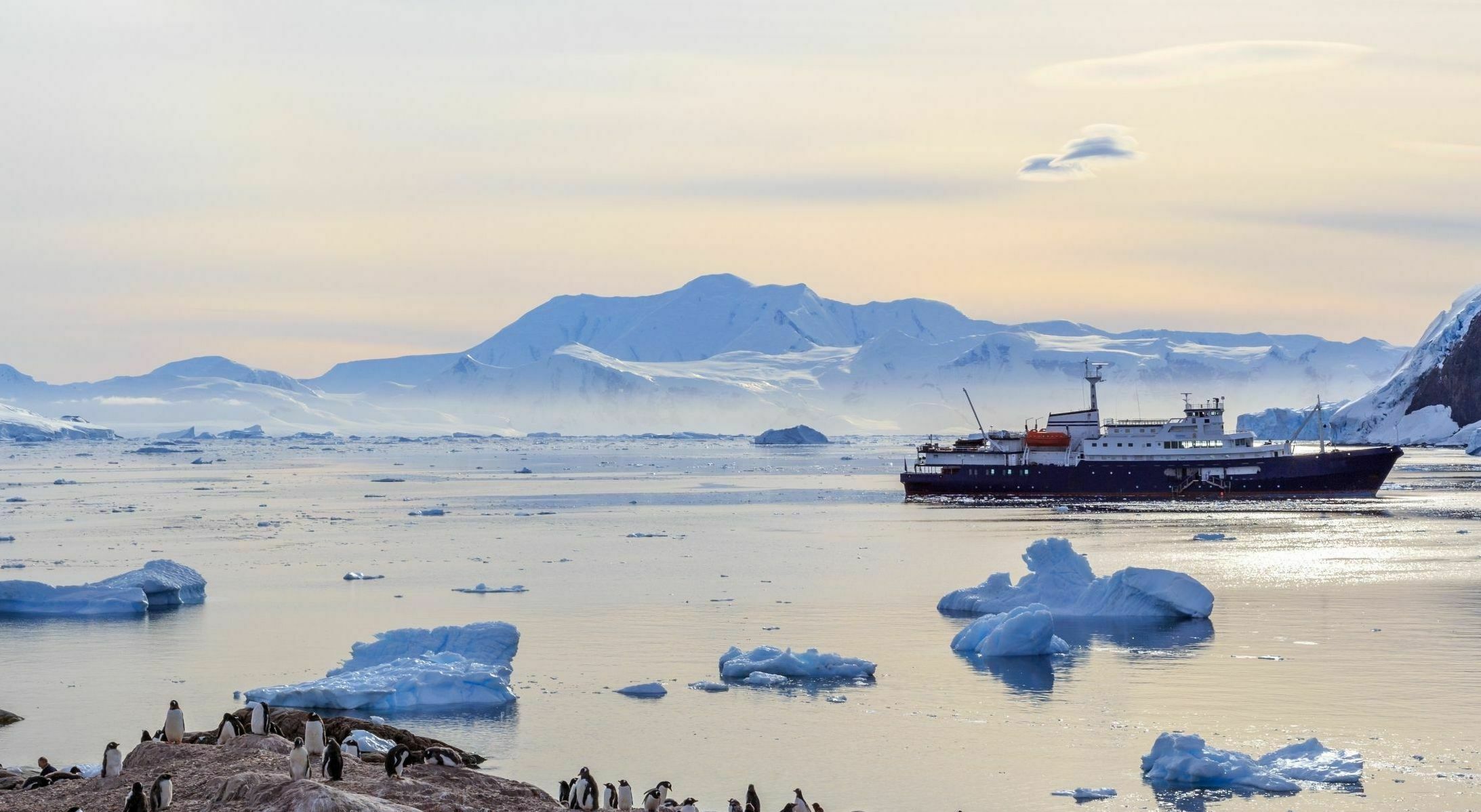
FUTURE OF ANTARCTIC TOURISM
What lies ahead?
With few enforceable legal mechanisms underlying the management of Antarctic tourism, responsible practices rely primarily on self-regulation and goodwill.
As the industry continues to grow and the climate crisis propels us into uncharted territory, clear, enforceable regulations are needed to protect the fragile environments in which tourism is taking place.
KEEP LEARNING
Related reading
Academic consultation: Dr Ricardo Roura, Antarctic conservation professional and independent scholar.
Visiting Antarctica
FEATURED LEARNING
Now that you’ve learned about Antarctic tourism, read on to learn more about extraordinary Antarctica.
 ASOC
ASOC


